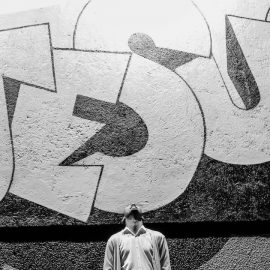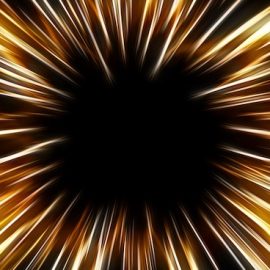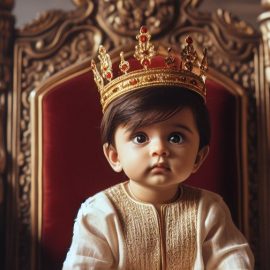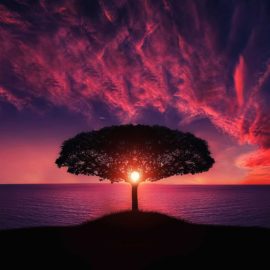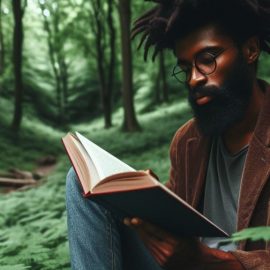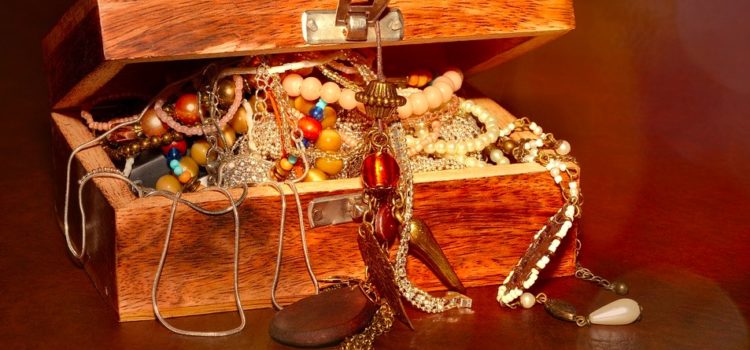
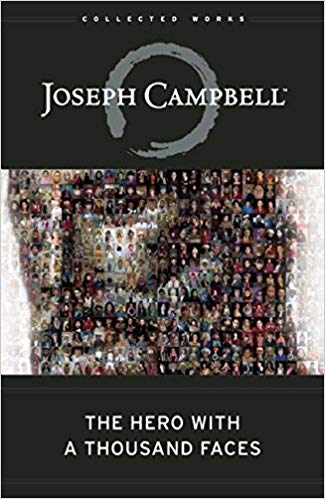
This article is an excerpt from the Shortform summary of "The Hero with a Thousand Faces" by Joseph Campbell. Shortform has the world's best summaries of books you should be reading.
Like this article? Sign up for a free trial here .
What is stage 11 of Joseph Campbell’s hero’s journey? What is “the ultimate boon”?
The ultimate boon is the stage of the hero’s journey in which the hero achieves limitless bounty or indestructible life. The ultimate boon is stage 11 of Joseph Campbell’s hero’s journey, from The Hero with a Thousand Faces.
We’ll cover what the ultimate boon may entail and look at two examples of the ultimate-boon stage of the hero’s journey.
Enlightenment
Before the ultimate-boon stage is enlightenment. After conquering their fears, the hero at last achieves their long-sought enlightenment. They have shattered the bounds of consciousness and reached a divine state. Mythological and religious traditions throughout history and across the world teach us that this power lives within us all—we achieve it through our own herohood.
In Buddhism, there is the figure of the Bodhisattva, overflowing with sympathy and compassion for the masses of humanity who must endure the suffering of existence. On the cusp of achieving nirvana, ultimate enlightenment, he turned back—vowing instead to bring all creatures to enlightenment first. As such, all of existence is infused with his presence.
In many traditions, this figure of ultimate enlightenment assumes both male and female forms. The Bodhisattva is represented as both masculine Avalokiteshvara and feminine Kwan Yin. The Great Original of ancient Chinese lore similarly embodied both masculine Yang and feminine Yin. In the Judeo-Christian tradition, Adam, the original man, also contains the original woman—Eve is created from his rib.
This motif symbolizes the mystery of creation and the division of the original matter into its component parts. All things are one because they come from the same essential elements. The male and female aspects (the essential ingredients of life) are contained in all things. This has real significance for the heroic cycle: this is the moment when the hero comes face-to-face with the awesome majesty of creation.
This moment represents the final shedding of the divisions and boundaries that mark the world he or she has left behind and the recognition that God or the universal spirit resides within the hero—in the Judeo-Christian tradition, we are all made in God’s image; in the Buddhist tradition, we are all reflexes of the image of the Bodhisattva. The hero is freed from the impulses, desires, hostilities, and delusions of the day-to-day world and achieves the state of being summed up by the Buddhist Eightfold Path: “Right Belief, Right Intentions, Right Speech, Right Actions, Right Livelihood, Right Endeavoring, Right Mindfulness, Right Concentration.”
It is worth noting that, while myth often represents this desire to bring enlightenment to the world as a supreme act of love and an example of the universal brotherhood of humankind, it has seldom played out that way in the pages of history. In actual human practice, the protection and love of God are only extended to members of the in-group, while those outside of the exalted community are persecuted. Thus, we have the historical irony of European Christian society—whose religion has at its core a doctrine of universal love—tearing itself apart through sectarian warfare and launching brutal wars of colonial expansion against the non-European world.
The Ultimate Boon
In the ultimate-boon stage of the hero’s journey, the hero achieves their goal and is reborn as a superior being. This is often shown by the ease with which the hero is now able to obtain the things that they seek. In the Irish legend of the Prince of the Lonesome Island, the hero is rewarded by being able to eat from a table with food that automatically replenishes, freeing him from hunger and want—he has achieved limitless bounty, indestructible life, the Ultimate Boon.
This concept of the ultimate boon has its roots in infantile psychology, where even the newborn child appears to have some vague idea of mythology and an awareness of a state of bliss beyond the distractions of the day-to-day world. We see this when the infant reacts to being torn away from the mother’s breast, or the temper tantrum when she is deprived of the things she wants. These are actually primal urges, fantasies for bodily indestructibility, endless and instant gratification, and protection from malevolent outside forces. These unconscious, infantile fantasies remain with us and live on in the myths, fairy tales, and religious doctrines that humans have created.
Many folk traditions explore the concept of the ultimate boon and indestructibility through the motif of the spiritual double or doppelganger. This is an external soul of the individual, another part of the self, that exists free from the injuries that the physical body endures. Only by destroying that soul (sometimes represented as a literal object like an egg) can the individual truly be extinguished. Among some Australian aboriginal people, a young man being initiated to the tribe is taken to a cave and shown a slab of wood with carvings on it. He is informed that this object is, in fact, his body and that he should never remove it lest he experience agonizing pain.
Grace of the Gods
The Ultimate Boon is variously represented across mythological traditions—the inexhaustible milk of Jerusalem in the Book of Isiah, the Olympian gods feasting forever on ambrosia, the Japanese gods drinking sake, the Aztec deities of pre-Columbian Mexico consuming the blood of humans. The hero seeks the grace of the gods, their energy substance, their elixir of impenetrable being.
But the gods may also be jealous in guarding the power of this ultimate boon from the hands of the hero. They may only be willing to release it to those who are truly worthy. And sometimes, the hero must resort to trickery to obtain this bounty.
In a Polynesian legend, the hero Maui seeks to wrest fire (the ultimate boon) from the fire god Mahu-ika in order to bestow its powers to mankind (much like the Greek legend of Prometheus). Maui challenges the fire guardian to a competition of feats of strength, the first of which is tossing. Mahu-ika tosses Maui up into the air, chanting an incantation as the hero rises and falls. Maui then does the same to Mahu-ika, chanting the same incantation. But as the fire guardian is falling, Maui calls out magic words that cause Mahu-ika to break his neck upon landing. Maui cuts off the head of the fire god, enabling him to share the boon of fire with the world.
Sometimes, however, this part of the myth is twisted, and the hero instead becomes a tyrannical ogre and usurper, from whom the world must be saved all over again. In the Zoroastrian Persian legend of Jemshid, this Emperor of the Golden Age succumbs to the temptations of the powers he has won through his struggles. He revels in his own glory, declaring himself to be the greatest sovereign that ever lived and that all domestic joy springs from him. But no sooner does he speak these words than the wrath of God descends from the heavens, forcefully reminding Jemshid that he who neglects the worship of the almighty brings only ruin and death upon himself.
The Folly of Physical Immortality
But the search for physical immortality, instead of spiritual enlightenment, will always end in failure for the hero, for it is to confuse the meaning of what the hero’s journey is supposed to be all about. As the Japanese proverb says, “The gods only laugh when men pray to them for wealth.” Immortality is not the ultimate boon.
Still, this desire for earthly glory has led humans to undertake extraordinary journeys: famously, the Spanish explorer Ponce de Leon accidentally discovered Florida in the course of pursuing the fabled Fountain of Youth. Sometimes the hero starts out seeking something tangible—weapons to slay his enemies, eternal life, material wealth—but through the struggle of the adventure wins an infinitely greater prize: self-actualization and enlightenment.
Ultimate Boon Example: Gilgamesh
In the ancient Sumerian Epic of Gilgamesh (the world’s oldest surviving work of literature), the legendary king Gilgamesh seeks immortality in the form of the plant “Never Grow Old.” He comes to a cave by the sea, where he meets a manifestation of the goddess Ishtar. She urges Gilgamesh to turn back from his quest for immortality and instead accept the pleasures of mortal life, to “Regard the little one who takes thy hand, let thy wife be happy against thy bosom.” But he insists and she guides him to the ferryman Ursanapi (a supernatural helper) who will convey him across the waters of death to the land where Utnapishtim lives (Utnapishtim is the sole survivor of the great flood from the Babylonian creation story and the Babylonian precursor to the better-known Biblical figure of Noah).
Utnapishtim tells Noah that the plant he seeks grows at the bottom of the sea. Gilgamesh thus ties stones to his feet and goes into the sea to descend to the ocean floor. He finds the plant and plucks it from the seabed, though it cuts and mutilates his hand. When he returns to shore, Gilgamesh rests, but the plant is stolen from him by a serpent who instead consumes it and thereby gains the power to shed its skin—thus achieving perpetual youth. Gilgamesh breaks down and weeps at his misfortune.
Ultimate Boon Example: King Midas
The Greek fable of King Midas is a neat illustration of the woe that accrues to the hero who seeks mere worldly possessions or wealth from the gods. Midas wins from the god Bacchus the right to request anything he desires. Foolishly, Midas wishes to have everything he touches turn to gold. Bacchus grants this wish, and, sure enough, every twig, apple, and stone Midas touches becomes golden. He orders a magnificent banquet to celebrate what he believes is this glorious bounty, only to realize his folly. When he touches the meat, it becomes inedible gold, as does the wine in his chalice. When his beloved daughter comes to comfort him, she too is transformed into a lifeless golden statue.
———End of Preview———

Like what you just read? Read the rest of the world's best summary of "The Hero with a Thousand Faces" at Shortform . Learn the book's critical concepts in 20 minutes or less .
Here's what you'll find in our full The Hero with a Thousand Faces summary :
- How the Hero's Journey reappears hundreds of times in different cultures and ages
- How we attach our psychology to heroes, and how they help embolden us in our lives
- Why stories and mythology are so important, even in today's world


